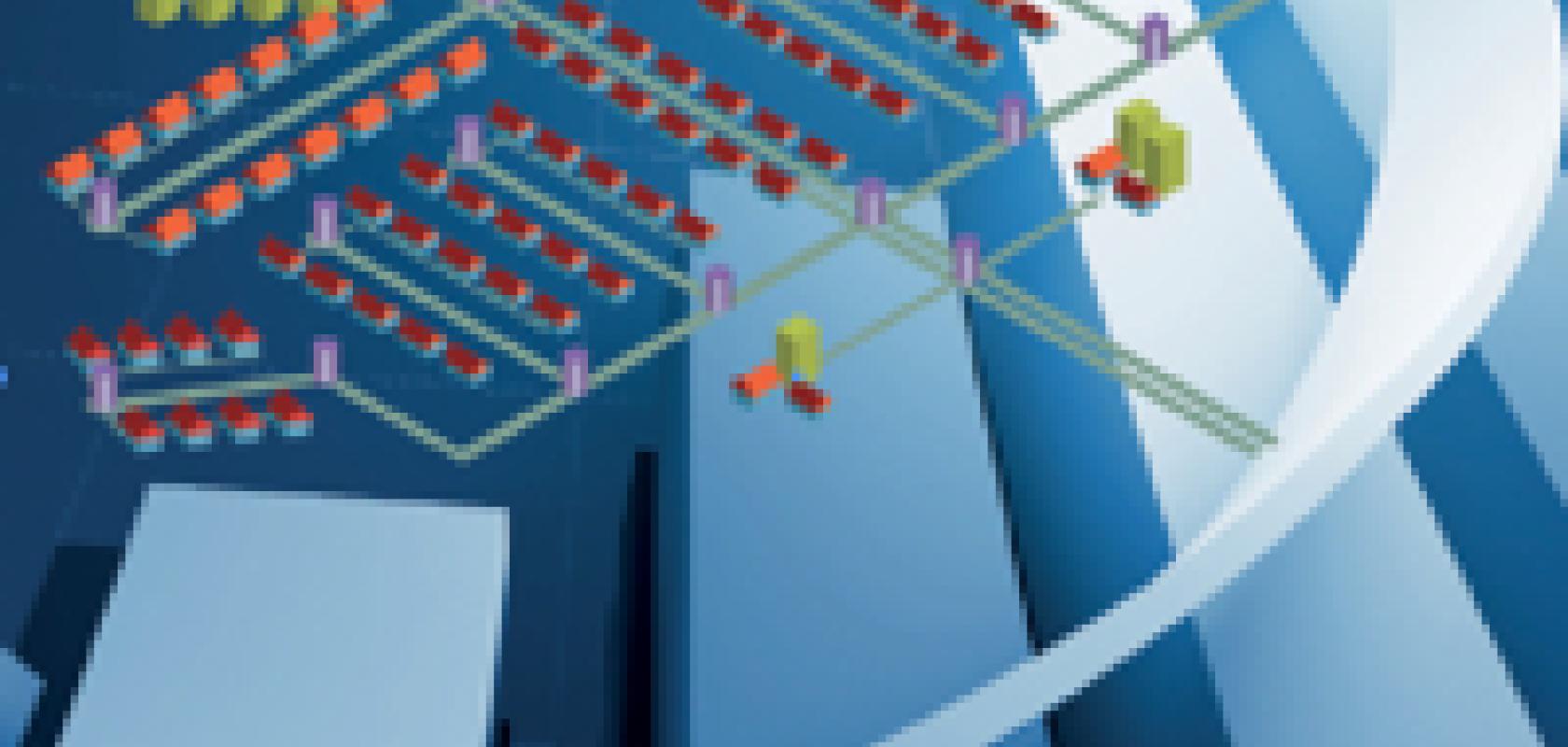In April, the International Telecommunication Union (ITU) is expected to approve a new standard, called G.fast, that should make it possible to bring ‘fibre to the distribution point’ (FTTdp) – closer to the customer than any previous technology, albeit not quite through the front door as in full fibre to the home.
In any FTTH deployment, a substantial part of the cost-per-subscriber is in those last few metres between the nearest cabinet or node, and the home. FTTdp, on the other hand, can provide super-fast broadband, and allow service providers to see a return on their investment, within a much shorter timescale than full FTTH. If the speeds of FTTdp can keep up with demand while being cheaper and quicker to deploy within existing infrastructure, then both service-providers and end-users can benefit from FTTdp strategies.
Stefaan Vanhastel, marketing director for fixed networks at Alcatel-Lucent, explains the costs of different architectures: ‘We compare everything to ADSL from the central office, which would have a cost of 1; FTTH has a cost of 15; FTTC with VDSL2 vectoring has a cost of five – so about three times cheaper than FTTH, the reason being that you don’t have to dig up every street, you don’t have to bring fibre all the way to the home.’
‘Cost is one aspect, time to market is another. Bringing fibre to the street corner – but not into every street – can speed up your deployment significantly. You avoid a lot of the digging, getting permission from the city council to dig up a street. In some cities you have to wait for civil works to be combined – so you can’t dig up the street just to deploy fibre, you have to wait until they replace the sewer or until they renew the water mains,’ explained Vanhastel.
In a full FTTH strategy, the investment needed to complete the infrastructure can be a risky undertaking for service providers because it can be years before they make a return on their initial investment. ‘The all-fibre future belongs to those service providers that can last long enough to realise it,’ said Ronan Kelly, product management EMEA director at Adtran.
Kelly explains: ‘There are wrecking yards of telecoms companies all over the world, where they embarked on heavy FTTH investment and they have run out of cash before they ever got to realise the returns. Then somebody steps in and picks it up for 10c in the dollar.’ He continued: ‘We firmly advocate, within our customer base at Adtran, as much as we would love to sell you our FTTH solutions, we provide you with a tool kit that allows you to invest incrementally and ultimately build a stable business for the long term. Then when you’re ready to go all the way to FTTH, we have got the solutions there for you.’
According to Vanhastel: ‘One of the interesting things that we have seen over the last few years is that operators no longer choose a single technology. A couple of years ago you had operators who were going FTTH everywhere and you had operators that were going FTTC.’
Kelly said: ‘If you are doing brownfield deployments; if you can’t guarantee that you can hit the expenditure targets that you need; then take the safer bet and bring the fibre closer to the customer, meet the bandwidth needs of the market you’re addressing today and for the next five years. Once you have recovered the return on that, then make the final investment.’ He continued: ‘For greenfield deployments – where you are connecting new buildings and you’re wiring up those new buildings with something – our firm belief is it is an absolute no-brainer to do FTTH in that scenario. It’s actually cheaper to do FTTH, because given the cost per metre for the materials these days, fibre is actually cheaper.’
FTTdp is attractive not only because it removes the need to dig up so many streets, it also reduces the initial investment. With its potential for data transmission rates of up to 1Gbps cover copper, G.fast makes the case for FTTdp even stronger.
‘G.fast is the next step in terms of copper technologies. Compared to VDSL2, it offers a lot more bandwidth,’ said Vanhastel. He continued: ‘The main difference compared to VDSL2 is that it uses a much larger part of the analogue frequency spectrum’. The most widely deployed VDSL2 technology deployed today uses frequencies between 0 and 17 MHz. G.fast standards specify the use of the spectrum up to 106 MHz but ‘there are already discussions within the industry about 212MHz which doubles up on the spectrum again,’ said Kelly. He continued: ‘Not all of that increased spectrum will equate to a doubling of the bandwidth, but you will still see an increase over and above what G.fast is predicting at the moment.’
Cross-talk and short distances
The main difficulty with higher frequencies is increasing cross talk between the copper pairs which reduces the available bandwidth. Acceleration technology, in particular vectoring, must be employed.
‘The higher the frequency, the more cross talk that you are going to get, so it’s a given that G.fast will require vectoring as part of the solution,’ said Kelly. Alcatel trialled G.fast technology in 2014 and ‘with G.fast at a distance of 100m we managed to get just 60Mbps. That’s ridiculously low, and the reason for that was cross talk. When we added vectoring into the mix, we actually got 500 Mbps on the same cable. That’s a big difference,’ said Vanhastel.
Conventional deployment models are not always suitable for complete coverage as Vanhastel highlights: ‘FTTH, FTTC, and FTTB were the three main models until maybe a year ago. Now, with the emergence of VDSL2 vectoring and G.fast with vectoring, we’ve started to see these “in-between” models. All these FTTdp models are appearing because operators simply need them; they need toolkits with all the solutions, so they can select the best one’.
However, G.fast only delivers high-speed broadband over a relatively short distance – typically no more than 200 to 300 metres – and so one distribution point can serve only a relatively few subscribers. Thus, the challenge of being able to get a return on the investment remains, even with fibre to the distribution point, as Kelly explains: ‘At the distribution point, I still need power for the equipment. I have typically got somewhere between eight and 25 subscribers to spread the cost of the installation across.You can’t put a cabinet out at that location to address 20 customers you’ll never get a return on your investment.’
‘Adtran have been pushing sealed outside plant DSLAMs for 12 years,’ Kelly continued, ‘a fully sealed waterproof piece of equipment that can be put on a pole or it can be deployed underground.’ The big benefit with both of those applications is that you don’t need a cabinet’ said Kelly. One of the biggest costs with deploying large cabinets is the power required, as Kelly explains: ‘In the UK, the installation of a local AC power supply can cost anything from £3,000. If there are civil engineering works and road digs involved, anything up to £20,000. If you had to incur that cost to address between 8 and 20 customers you would never get a return on that investment.’ The answer is equipment that consumes less power and is less costly than deploying a large cabinet.
The proposed solution to this is reverse powering: ‘The device that goes into the customer’s premises to terminate the broadband signal has the capability of providing a small current back over that line, which assists in powering the equipment,’ said Kelly. ‘There is a lot of focus within the industry to see if reverse powering will be a means of sidestepping that install power cost.’
FTTdp fits with fibre deployment strategies
‘FTTdp with G.fast is seen as complementary to a longer-term FTTH strategy because ultimately what they are doing is pulling that fibre closer and closer to the customers,’ said Kelly.
He continued ‘They [service providers] are doing it in an incremental phase that allows the operators to get a return on their investment. So they can take the investment in smaller chunks, recover a return, and then slowly get to that FTTH phase.’ This provides the advantage of being able to reuse the existing fibre optic cable infrastructure that had been deployed for FTTC or FTTdp. ‘These are not wasted or lost investments; you can reuse a big part of those investments when you go FTTH. If you bring fibres to the street corner, for cabinet deployment, obviously you can reuse that fibre,’ said Vanhastel.
A further advantage of FTTdp is that there is no need physically to gain access to someone’s home in the course of the deployment. ‘In some countries, this is a major headache. It is a big part of the operational costs: for example, the person is not at home, so you have to make appointments. It can be very expensive to enter the home,’ said Vanhastel.
Kelly has heard similar problems from Adtran’s customer base: ‘Quite often a lot of the challenges are very little to do with the technology itself and more to do with simple things like way-leave applications, planning permission, and missed customer appointments. Some of the operators that we speak with, talk about missed customer appointments in excess of 30 per cent.’
Longevity?
The FTTH council has advised that only FTTH is a ‘future proof’ solution, so if FTTdp is seen as a complementary solution to the ultimate FTTH strategy, its lifespan will depend on the applications. Few consumers upgrade just for the sake of it – mostly they wait until they experience a significant worsening of service.
Kelly gave an example of some European operators that have undertaken FTTH deployments and are currently offering 100Mb services to customers: ‘When they average usage across all customers on their customer base they are typically seeing maximum average usage in the region of half a megabit per second (500 kilobits).’
Although the figure might be slightly misleading because usage patterns vary depending on the other services that end users have available, the question remains: how long will it take for 500Mbps speeds to become insufficient? ‘It’s a tricky one to answer. With normal usage patterns and even taking into account things like 4K TV, I firmly believe that there is at least 20 years in the G.fast technology before it begins to come under pressure.


